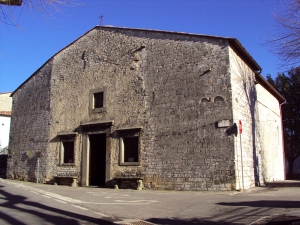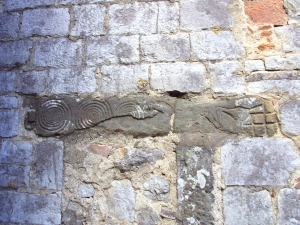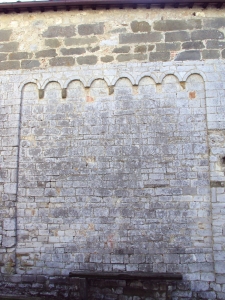
The town of Coreglia Antelminelli stands on the remains of an ancient castle, from which it draws its compact urban structure. The castle church was that of Saint Michele, while the church of Saint Martino, more ancient and built starting from the XI century, perhaps with the function of a cemetery church, rises outside the ancient walled border.
SP38, 33, 55025 Coreglia Antelminelli LU
The church of San Martino di Coreglia, located in the immediate shelter of the inhabited nucleus of the castle, is a complex architectural structure with three naves with an apse within which three main construction phases can be identified. The oldest of these places it among the founders of medieval Lucca architecture and can be dated to the 9th century: the perimeter limits of the building - which perhaps had a single-nave plan - with an anomalous trapezoidal pattern perhaps motivated from the structure of the land, and the structures of the left side and of the apsidal head of the same nave. On this side it is still possible to observe the typical motif with hanging arches that brings this construction closer to the perhaps contemporary, and equally problematic, parish of Arliano. A portal was opened today with a buffered lintel carved with a woven pattern. In a second phase, referable to the full 10th century, the church took the three-nave plan and proceeded to the reconstruction of the apse with three single-lancet windows divided by pilasters and crowning of small arches and the apse head of the right nave. The internal support system with arches on low cylindrical columns was also reworked, with low capitals in relief with abstract figures not lacking in classical references. In the last medieval phase, during the XI century, the right side was also reconstructed. The facade is instead the result of a 17th century renovation, while the bell tower was erected in the mid-19th century to replace a previous structure. The interior of the church maintains the appearance it must have had in the Middle Ages despite the presence of the 16th century fresco with the Assumption of the Virgin which decorates the apse. It is doubtfully assignable to Pietro Sorri and the canvas with the Madonna del Rosario was preserved in the church in 1568. The tabernacle for the holy oils is a valuable work of the civital ambit of the last decades of the 16th century, similar to the one present in the nearby church of San Michele. Near the church stands the 16th century Oratory of San Rocco.
Scopri altre attrazioni vicino a Saint Martino
See allYou may also like..
See allFind more
0


















